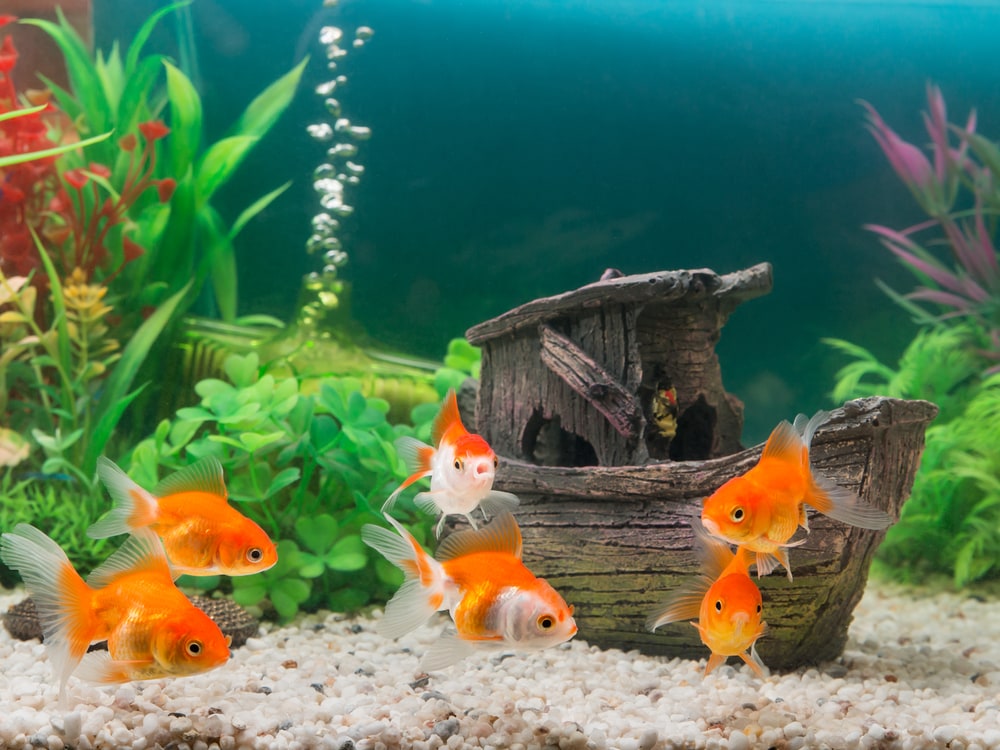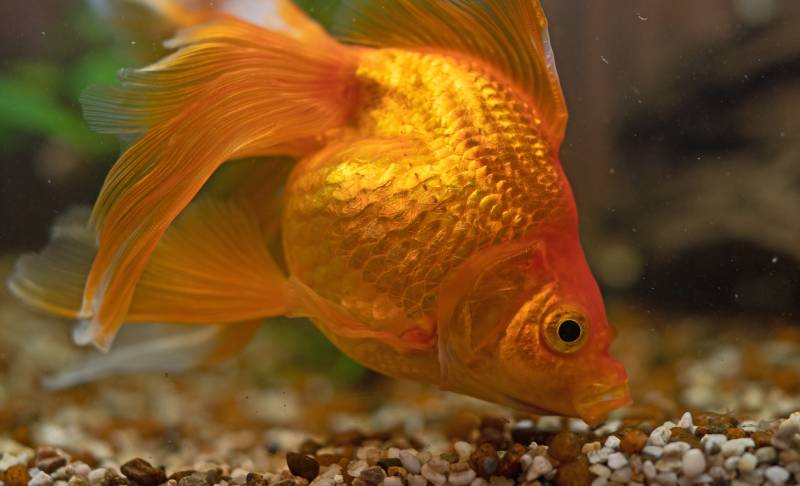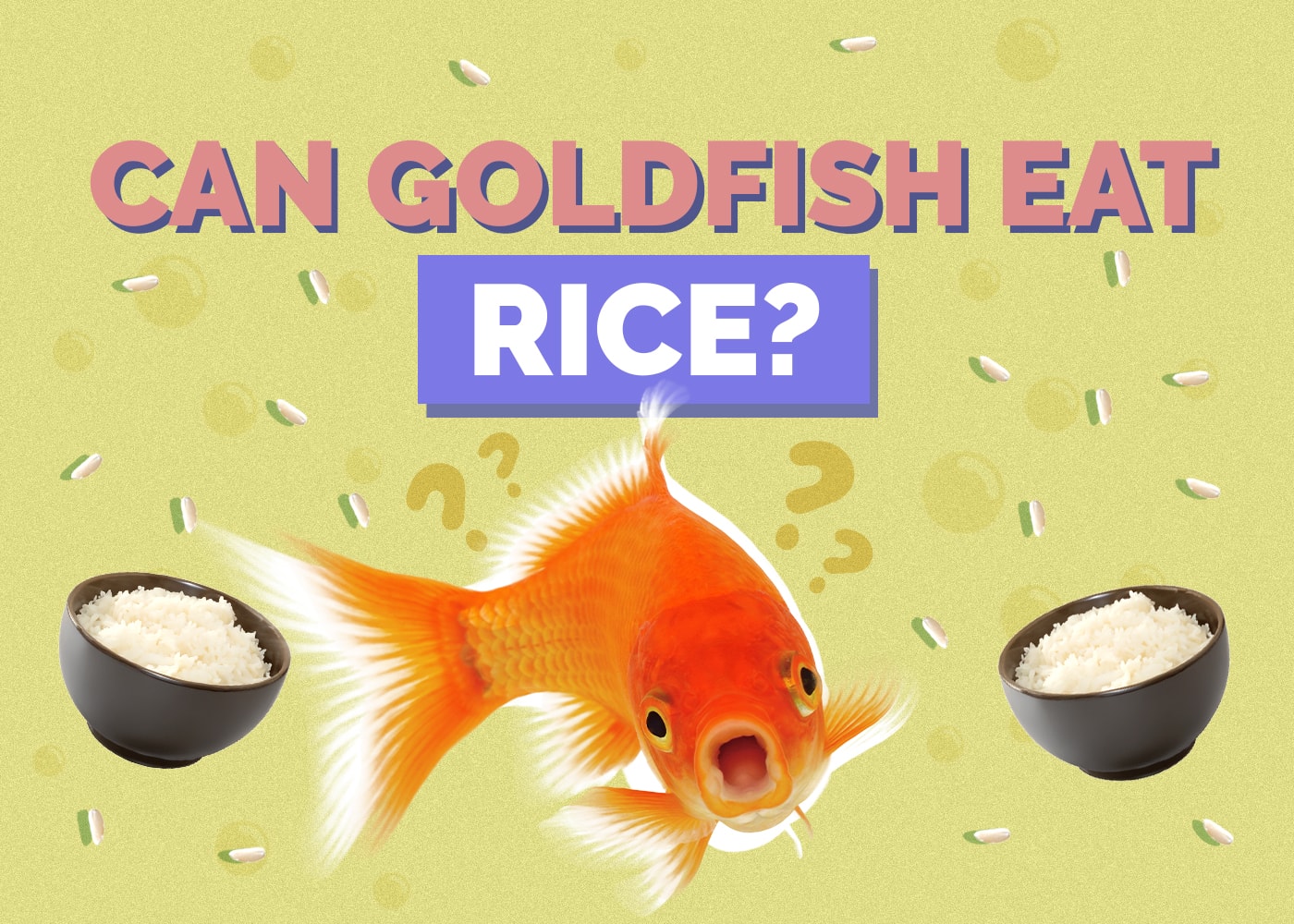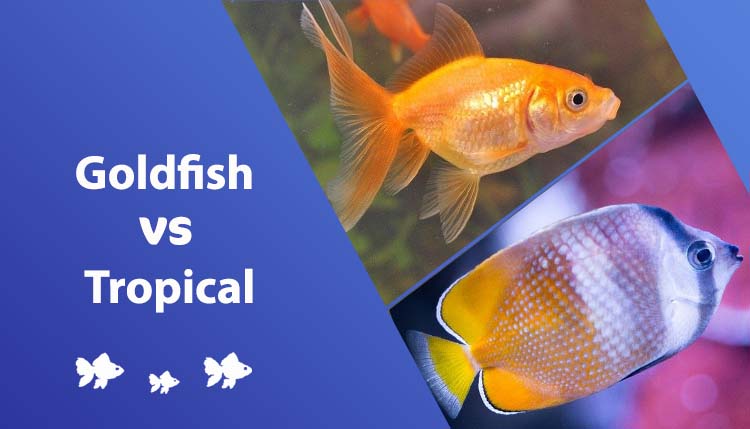Goldfish Tank Size Guide: Vet-Reviewed Tips & Tricks
Updated on
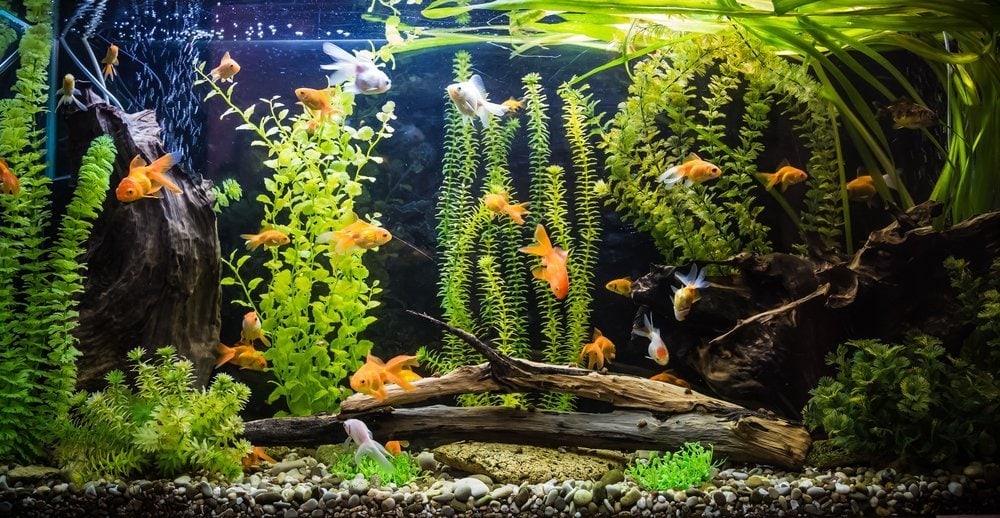
Click to Skip Ahead
Although the most common pets in America are undoubtedly dogs and cats, you may be surprised to learn just how many people keep fish. According to a recent survey, an impressive 11.8 million US households own freshwater fish!1 Freshwater fish like goldfish are insanely popular, surprisingly tough in the correct setup, and come in various sizes and colors.
If you have plans to keep a goldfish or two as a pet, you probably want to know how large the tank should be. You might also wonder if tank size matters when it comes to goldfish. Goldfish are shoaling fish, this means they are social and enjoy each other’s company. You should get at least a 40 gallon tank for two fancy goldfish, and if you plan to have more, add 10-15 gallons more for each additional fish. For a pair of common goldfish or Comet goldfish, consider a 75 gallon tank, and if you plan to have more, consider adding 15-20 gallons more for each additional fish, or a pond setup.
That’s because, yes, tank size does matter. Common goldfish will grow quite large; others need their space because all goldfish have an exceptionally high bioload, require enrichment in the form of spaces to explore and forage, and suffer from a plethora of issues in smaller tanks, so a larger tank is essential.
There’s more to the goldfish tank size question, like what can happen if the tank is too small, can you put different goldfish species together in one tank, and how do you keep their tank water clean? If you’d like to know the answer to these questions and several more, plus get some interesting, actionable info about keeping goldfish in your home, read on!
Why Does Tank Size Matter for Goldfish?
The image of a goldfish in a bowl is indelibly imprinted on most humans’ brains. We see goldfish living like this in TV shows, movies, famous paintings, magazines, and more. Cleo, the flirty goldfish in Disney’s Pinocchio, is a prime example. As ubiquitous as this goldfish image might be, it’s also the worst way to keep them.
- Goldfish are very active and need lots of space to swim around.
- The amount of dissolved oxygen in a small tank will be far less than what your goldfish needs to grow properly.
- Harmful levels of ammonia from goldfish metabolism and their poop will build up incredibly fast in a tiny bowl.
- A small container can shorten a goldfish’s life significantly.
- You can’t put a reliable or meaningful water filtration system in a tiny fish bowl.
As you can see, putting a goldfish in a bowl is more or less a death sentence. Most goldfish in bowls don’t live past 2 or 3 weeks, which is why there are so many “jokes” in shows and movies about having to flush the poor things down the toilet.
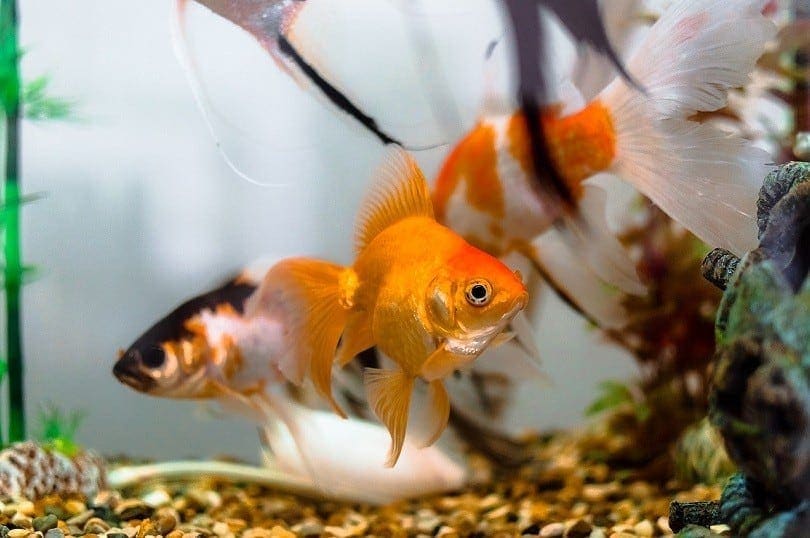
How Do I Choose the Correct Tank Size for my Goldfish?
Choosing the correct tank size for one or more goldfish isn’t complicated. Consider the following guidelines as a good starting point:
- A single Goldfish: 25 gallons (it is not advised to house them alone)
- Two Goldfish: 40 gallons
- Three Goldfish: 55 gallons
- Four and beyond: an additional 10 or 15 gallons per additional goldfish
- A single Goldfish: 55 gallons (it is not advised to house them alone)
- Two Goldfish: 75 gallons
- Three Goldfish: 90 gallons
- Four and beyond: an additional 30-40 gallons per fish (a small pond setup is best for a large group of common variants of Goldfish)
Though housing goldfish alone isn’t advised, we’ve provided recommendations in the unfortunate event that you need to isolate an individual for a closer inspection, medication, or treatment for an ailment or disease.
What Influences a Goldfish’s Health More, Tank Size or Water Quality?
While there’s a lot of debate about what size is best for keeping goldfish, one factor is slightly more important if you want your goldfish to stay happy and healthy: water quality.
The fact is, you could put a single goldfish in a 50-gallon tank, and it would still suffer and die if the water in the tank is dirty. Yes, a tank large enough to provide ample swimming space for your Goldies is important. However, if they don’t have clean water, the tank size isn’t going to save them.
That means you need to clean the water regularly and have an excellent water filtration system in your tank. Live plants are also a great idea and will keep the water clean and reduce the need to change the tank’s water, which can take a lot of time and energy.
How To Keep the Water in a Goldfish Tank Clean
Earlier, we discussed how water quality is just as crucial as tank size. For that reason, we’ll look at how to clean the water in your goldfish tank. There are several excellent methods, most of which can be done concurrently once the tank is up and running.
1. Cycle the Goldfish Tank First
Cycling a fish tank should be done for all fish, including goldfish. Cycling means setting up your tank and letting everything run for a few weeks with an artificial source of ammonia before adding your goldfish. For cold water freshwater fish like goldfish, 6 to 8 weeks of cycling is a good idea. That way, the filter will be ready, “good” bacteria will form in the water, and the temperature will be just right.
You can test if an aquarium is ready for fish by using a water test kit and some pure household ammonia (which can be readily purchased from most hardware stores). Add enough ammonia in your aquarium until your test kit shows a reading of about 2 – 4 ppm. Let the aquarium “run” overnight (as in, leave it be with the filters running). The next morning, both ammonia and nitrite should be 0 ppm. You should also see some nitrates (however in a heavily planted aquarium you might not be able to detect nitrates). If ammonia and nitrite levels are not 0 ppm the next morning, your aquarium isn’t ready for fish and you should hold off until it is.
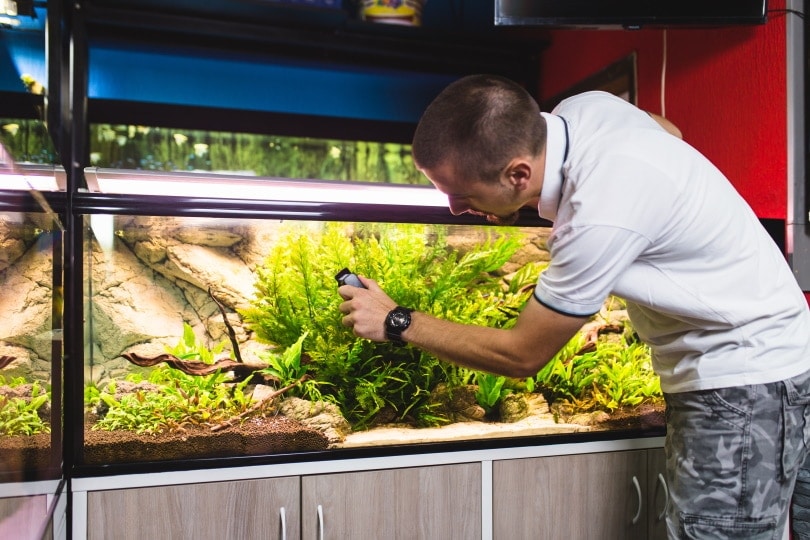
2. Choose a Quality Filter
The filter system you choose for your goldfish tank is critical. It needs to be rated for more than the number of gallons in your tank and, the rule of thumb is that the water flow in the filter should be 5 to 7 times the volume of the aquarium. For example, if you have a 55 gallon tank, consider a filter rated at over 275 gallons per hour.
A trick many goldfish keepers like to use is to install multiple filters in their aquarium. Not only does this help them achieve excellent levels of filtration, but it makes the task of filter maintenance much easier too, as you can alternate between filter cleanings (that way, a maintenance session will not disrupt the filtration process by too much if something goes awry).
3. Purchase a Siphon
A siphon is more or less a vacuum cleaner for a fish tank. You can use it as often as necessary to “vacuum” the fish poop and other debris out of your tank.
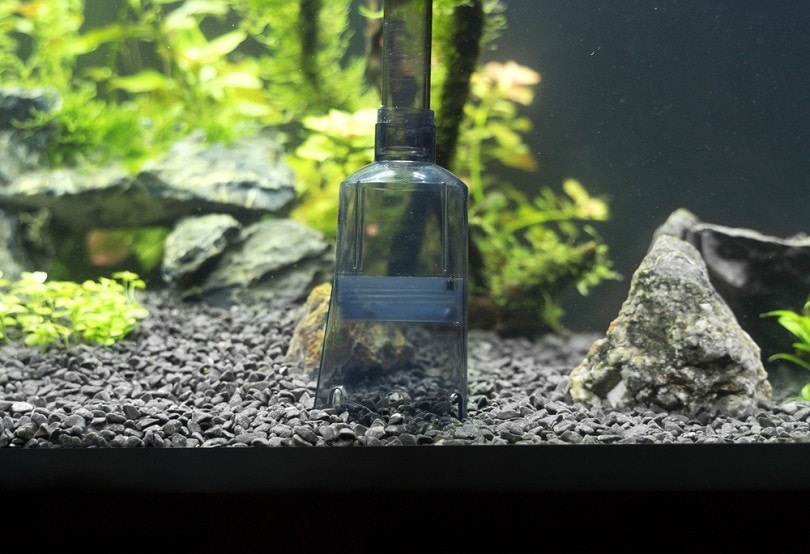
4. Change 25% of the Tank’s Water Per Week
To get rid of the excess nitrates in their tank, and to remove any debris from the tank, remove 25% of the water and replace it with fresh water once a week.
5. Place Live Plants in your Tank
Live plants not only look beautiful in a fish tank but also filter the water by removing ammonia, carbon dioxide, nitrite, and nitrates. They also aerate the water by releasing oxygen. Live plants also keep algae growth under control, which reduces the time you need to clean your tank.
Frequent Asked Questions
Can Different Goldfish Species Live Together in the Same Tank?
While there’s a lot of debate about what size is best for keeping goldfish, one factor is slightly more important if you want your goldfish to stay happy and healthy: water quality.
The fact is, you could put a single goldfish in a 50-gallon tank, and it would still suffer and die if the water in the tank is dirty. Yes, a tank large enough to provide ample swimming space for your Goldies is important. However, if they don’t have clean water, the tank size isn’t going to save them.
However, because larger aquariums hold more water, they also allow for more dilution of harmful chemicals and toxins (such as ammonia). Therefore, they are safer for fish, and offer your fish a better chance of survival in case of an oversight on your part. In a smaller tank, the same amount of chemicals will be far more dangerous, because they would be diluted much less. Therefore, though water quality is more important than tank size, it’s also worth mentioning that good tank sizes assist in maintaining water quality!
Regardless of tank size, you will need to change the water regularly (in the form of routine partial water changes) and have an excellent water filtration system in your tank. Live plants are also a great idea and will keep the water clean and help aerate the water as well! However, goldfish are notorious for uprooting and destroying delicate plants and saps. Nonetheless, hardy, large aquarium plants can definitely be grown in a goldfish tank.
Can Baby and Adult Goldfish Live in the Same Tank?
It’s best to keep baby goldfish in a separate tank from adults because, under most circumstances, the adults will eat the babies. In fact, they will even eat any eggs if the opportunity presents itself. Like so many other fish, goldfish have no parental instincts. You will be able to put the two together once the young are large enough to keep up with the adults.
Usually, that’s when the baby goldfish have become strong swimmers (so they don’t get sucked into the filter) and when they’re too big to fit in the adult goldfish’s mouth (so they don’t get eaten).
Is It Better To Have Multiple Goldfish in the Same Tank?
Yes. Goldfish are shoaling fish. This means they enjoy each other’s company and do best in groups. It is worth noting though that they aren’t schooling fish. The difference between the two is that fish that stay together for social reasons are shoaling, and if the fish are swimming in the same direction in a coordinated manner, they are schooling. Schooling offers some species of fish a better sense of security and offers them more protection from predators. Therefore, when housed together, your goldfish will not necessarily swim in unison or in a coordinated manner and you’ll likely notice them doing different things, however they do appreciate each other’s presence and benefit from it.
Final Thoughts
Does size matter when it comes to goldfish tanks? Yes, because goldfish need plenty of water to swim, live and thrive. That makes tank size critically important for your goldfish.
While water quality is undoubtedly important for goldfish, it’s much easier to both obtain and maintain good quality water in a large aquarium versus in a small aquarium. Therefore, a large aquarium will help you maintain water quality much more efficiently than a smaller one would.
We hope the information we’ve provided today has been helpful and given you the answers you were searching for. Keeping goldfish is a rewarding pastime and provides a soothing, tranquil respite from the stress of the modern world. However many goldfish you decide to keep, we wish you the best and hope your Goldies live long healthy lives!
Featured Image Credit: S-F, Shutterstock




